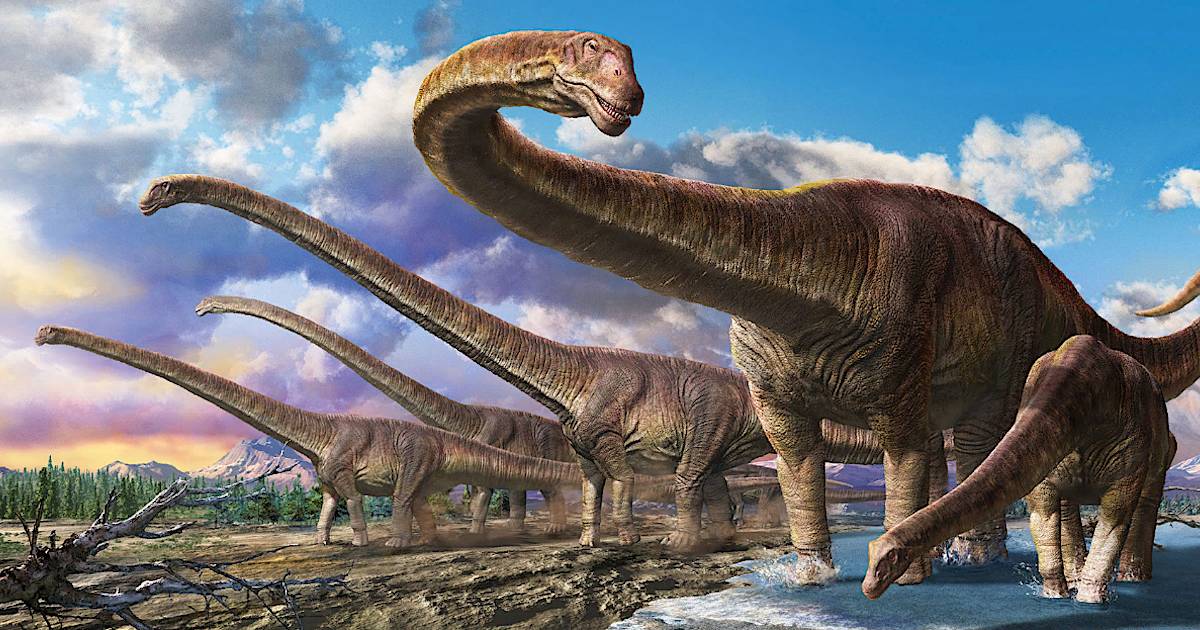The question of which dinosaur holds the title of the biggest is one that fascinates both paleontologists and dinosaur enthusiasts alike. For decades, scientists have unearthed fossilized remains of colossal creatures that once roamed the Earth. The answer to this question, however, is not as simple as naming a single dinosaur, as size can be measured in different ways—length, height, and weight all factor into the equation. Still, two giants stand out above the rest: Argentinosaurus and Spinosaurus. Let’s dive into the details and explore which dinosaur is the biggest of them all.
The Titan of the Late Cretaceous: Argentinosaurus
Among the dinosaurs that were known to grow to incredible sizes, Argentinosaurus is widely regarded as one of the largest—if not the largest—dinosaur species. This massive herbivorous sauropod lived during the Late Cretaceous period, approximately 94 to 97 million years ago, in what is now Argentina. Scientists believe that Argentinosaurus could grow up to 100 feet (30 meters) long and weigh as much as 100 tons, making it an absolute giant in terms of sheer size.
Argentinosaurus belonged to the group of sauropods, known for their long necks and tails, and massive bodies. These dinosaurs were equipped with a set of sturdy, column-like legs, allowing them to support their enormous size. Despite their bulk, sauropods were generally herbivores, feeding on vast amounts of plants, which they could reach thanks to their long necks.
The exact size of Argentinosaurus is still debated among paleontologists due to the incomplete fossil record. Most of the specimens discovered have been limited to partial skeletons, with some estimates suggesting it could have reached even greater lengths than the ones currently believed.

The Mighty Spinosaurus: A Different Kind of Giant
While Argentinosaurus holds the title for length and overall mass, another dinosaur, Spinosaurus, might have been the biggest in terms of sheer volume and perhaps weight distribution. Spinosaurus lived much earlier, during the Cretaceous period, around 112 to 93 million years ago, and it roamed what is now North Africa.
What sets Spinosaurus apart from other large dinosaurs is its specialized body, which suggests it was a semi-aquatic hunter. Spinosaurus was characterized by a sail-like structure on its back, formed by elongated neural spines, which extended vertically from its vertebrae. This sail, combined with a long, crocodile-like snout, made it an apex predator in both aquatic and terrestrial environments.
Studies suggest that Spinosaurus reached lengths of up to 50 to 59 feet (15 to 18 meters) and weighed around 7 to 10 tons, which is smaller than Argentinosaurus in terms of weight but still incredibly impressive. Some researchers argue that Spinosaurus may have been the largest carnivorous dinosaur to ever walk the Earth, particularly if we consider its body proportions and the possibility that it hunted and swam in rivers and lakes, unlike many other theropods that were exclusively land-based.
Comparing Other Giants
While Argentinosaurus and Spinosaurus are the top contenders for the title of the biggest dinosaur, they are not the only giants that roamed the planet. Other massive dinosaurs include:
- Titanosaurus: Another enormous sauropod, Titanosaurus lived in the Late Cretaceous and was closely related to Argentinosaurus. Fossils of Titanosaurus suggest it may have reached similar lengths and weights.
- Brachiosaurus: Known for its long neck and relatively upright posture, Brachiosaurus reached lengths of up to 80 feet (24 meters) and weighed approximately 50 tons. It is one of the more well-known sauropods due to its appearance in popular media, such as Jurassic Park.
- Dreadnoughtus: This titanosaur from the Late Cretaceous period lived in what is now South America. It is believed to have weighed about 65 tons and reached lengths of around 85 feet (26 meters), making it one of the heaviest dinosaurs ever discovered.
How Do We Measure Size?
Measuring the size of a dinosaur isn’t as straightforward as it sounds. The fossil record is incomplete, and much of the available material is fragmentary. Paleontologists typically rely on bone measurements, particularly femurs and other large bones, to estimate the overall size and weight of a dinosaur. These estimates are also based on comparative anatomy, where the size of an animal is inferred by comparing it to similar species for which more complete fossils exist.
Additionally, modern technology, such as 3D modeling and computer simulations, has allowed scientists to create more accurate estimations of a dinosaur’s size by reconstructing skeletons digitally and simulating how the animal might have moved or interacted with its environment.

Conclusion
While Argentinosaurus is generally considered the largest dinosaur in terms of length and weight, Spinosaurus presents an interesting case as a contender for the biggest predator. Each of these massive creatures reflects the incredible diversity of life that existed during the Mesozoic Era. Despite the incomplete nature of the fossil record, the discovery of these enormous dinosaurs gives us a glimpse into an ancient world where giants truly walked the Earth. Whether herbivores like Argentinosaurus or the apex predators like Spinosaurus, these prehistoric titans continue to capture the imagination and awe of scientists and enthusiasts alike.



